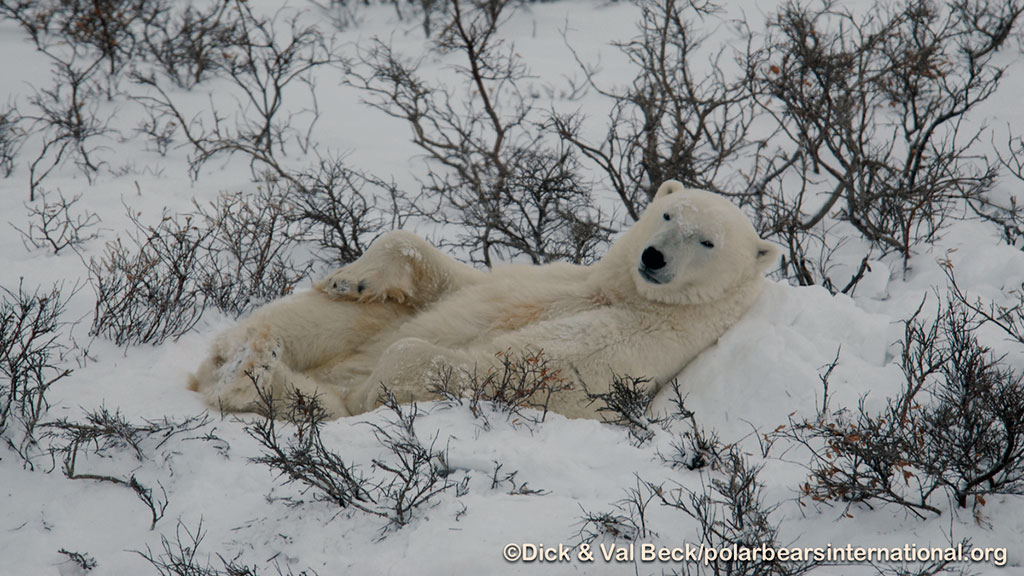Time to stretch and start your morning right! How about a little stretch and then some seal blubber?
Seal hunting is bloody work, but someone has to do it. The polar bears of Churchill are on the job. Here are some fast facts to keep in mind while watching the Polar Bear Cams – now live – this season:
- The polar bear’s main prey is the ringed seal. Polar bears usually hunt ringed seals by waiting for the seals surface to breathe at openings (leads) in the ice or at breathing holes called aglus.
- Ice is a must. Polar bears depend on ice for access to their main prey.
- In summer, when ice floes retreat, some polar bears follow the ice—sometimes traveling hundreds of miles—to stay with their food source.
- Polar bears stranded on land in summer must stay put until the ice forms again in fall. On land, bears face lean times. They rarely catch seals in open water.
- Polar bears locate breathing holes with their powerful sense of smell and lie in wait for the seals to rise. Polar bears have to be smart and patient because the wait can be long—from hours to days.
- Bears also stalk ringed seals that are basking on the ice by taking advantage of their sleep-wake rhythms. The bear crawls slowly forward and freezes in place when the animal raises its head. At about 20 feet from the seal, the bear pounces, killing the seal before it can escape back into the sea.
- Adult ringed seals have a thick layer of blubber and reach an average length and weight of 4.1 feet and 150 pounds. Their backs are dark and spotted with cream-colored rings. Underneath, their coats are white to creamy yellow.
- Polar bears’ lives are a cycle of feasting and fasting. When hunting is good, polar bears eat only the seal’s blubber and skin. They can eat 100 pounds of blubber in a single sitting! Younger, less experienced bears devour the remains, as do arctic foxes.
- Scientists have found that when polar bears dine exclusively on seal fat, their cholesterol levels drop lower than those of fasting bears because of the protective quality of the omega-3 fatty acids found in the seals.
- The polar bear is an opportunistic hunter, always alert to other food sources—including vegetation, geese, bird eggs, and even the occasional caribou, if available. Although some individual bears may benefit from eating these alternative foods, there is yet no evidence they could provide enough calories to sustain any of the existing populations of polar bears.
Crazy Fact: Though one bear may own a large carcass, he won’t object to sharing if his guests beg properly. Begging involves a submissive, low-to-the-ground approach, followed by a slow circle around the carcass, and touching the nose of the bear in charge.
Read more FAQs about polar bears at Polar Bears International.



